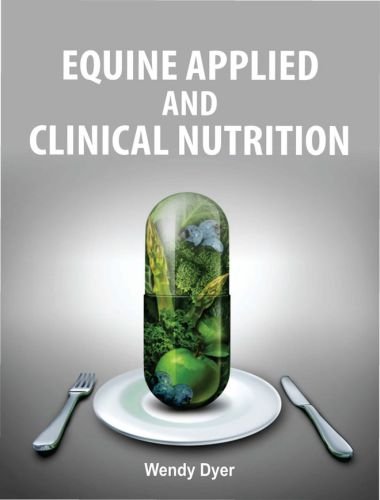Equine Applied and Clinical Nutrition by Wendy Dyer
Year January 2019, File Type: PDF

Nutritional management of nonnal healthy horses involves meeting their protein, vitamin, mineral and energy requirements. The age, activity level, and stage of reproduction all affect those nutrient requirements and there are commercial feeds designed specifically to address the nutritional needs of each lifestyle.
There are medical conditions affecting some horses that may be better managed with specific nutritional manipulations. Laminitis is an important equine disease, with evidence of its significance going back to the beginning of recorded history. Today, laminitis is said to be the most common reason for a horse to be presented for veterinary treatment.
Laminitis, also known as founder, is a systemic disease that manifests in the foot acutely as severe pain and inflammation, lameness and debilitation. Regardless of its trigger, laminitis in its most severe fonn causes a breakdown of the laminar attachment, resulting in separation and movement of the coffm bone.
As the coffin bone rotates and descends within the hoof capsule, the prognosis for recovery worsens. The disease begins with an initiation point and proceeds through a developmental stage before the acute phase of excessive laminar inflammation. Total destruction of the hoof structure can occur, depending on the degree of inflammation and the extent of laminar tissue damage. In its chronic fonn, laminitis can result in complete digital collapse or repeated episodes of founder. Animal Husbandry and Nutrition
Despite our best efforts to provide our beloved animals with high quality feed, horses are nonetheless prone to equine nutritional diseases that can adversely affect their performance and health. These diseases are categorized into one of three main areas: directly related to nutrition, indirectly related to nutrition, or a combination of the two.
Those directly related to nutrition are, generally speaking, completely preventable with proper nutrition and supplementation management. No doubt, medical students and physicians as well as other paramedical professionals such as medical technologists, nurses and public health personnel should have a basic grounding in the diagnosis, prevention and treatment of human parasitic infection. The aim of the present work has been, and continues to be, to provide such fundamental information of animal disease special reference to horse.
